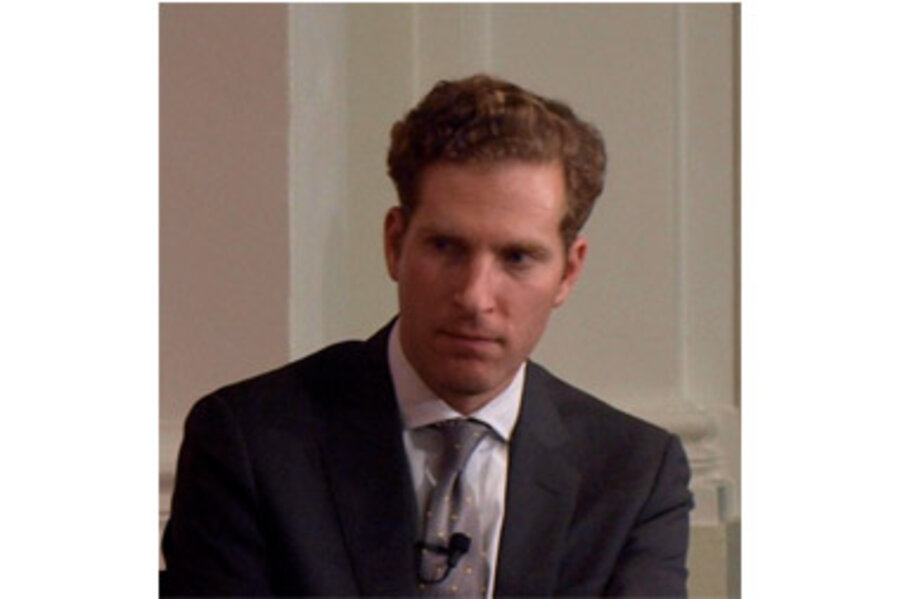Liberal vs. liberal in FDR's Supreme Court
Loading...
We all like to think we can handle shades of gray. But when it comes to politics, a lot of us see the world in black and white. Liberals often think conservatives are all the same, and vice versa, while both sides prefer to believe moderates are just the other side in disguise.
Ideology is much more complicated. Just ask four influential Supreme Court justices from the middle of last century.
Each was appointed by President Franklin Roosevelt and each carried the liberal label. But, as the title of one of 2010's best books puts it, their supposedly similar views didn't stop them from turning on each other.
Their sniping helped create legal doctrines – both conservative and liberal, by modern-day standards – that affect the rights we have (and don't have) today.
Scorpions: The Battles and Triumphs of FDR's Great Supreme Court Justices, by Harvard University law professor Noah Feldman, is now out in paperback. In an interview this week, I asked Feldman about the black-robed battles (Go Fightin' Justices!), the evolution of liberalism, and one judge's tawdry (but not just tabloid-y) personal life.
Q: The Supreme Court blocked many of FDR's New Deal reforms, prompting him to try – and fail – to expand and pack the court. Then its resistance began to wilt, and judges started retiring. What happened then?
A: Roosevelt got a chance to name an amazing nine justices of the Supreme Court.
He was not namby-pamby on this question. He wanted people who shared his views, he wanted liberals, and he wanted lots of them.
FDR's justices were allies while he was alive, but after he died, they developed four totally different theories of what the Constitution is, two of which are considered conservative and two of which are considered liberal.
Q: What does that tell us about how the court works?
A: Even if you put people on the court who have similar political perspectives, that doesn't mean they have the same deep values. If they're smart, ambitious, and have differing approaches, they will clash and productively come up with new ideas about what the Constitution will mean.
Q: You write about how Justice Felix Frankfurter, a liberal icon of his time, didn't act like a liberal judge would today. He even went along with the court's ruling that said the government could require schoolchildren to salute the flag. What did he believe?
A: He’s an amazing figure. He was the best known liberal in the United States, a famous superstar law professor. But his theory as a liberal was that the Supreme Court should keep its nose out of controversial affairs and be a neutral arbiter. Once he was on the court, he still believed that.
In a case about Jehovah's Witnesses and being required to salute the flag, he said it's not a smart law, but it's not the court's job to intervene. He thought that was the liberal position, and he was personally offended by people saying that as a Jew, he should never have made that vote.
A couple years later, the court reversed itself.
Q: Why was liberalism at that time so different from what it later became?
A: During the New Deal, people thought to be liberal was to reject socialism on one extreme and fascism on the other, and to preserve capitalism through regulation and a social safety net.
That was what liberalism was, and it said almost nothing about civil rights or civil liberties, which today we think of as very important parts of liberalism. They came to be part of the definition of liberalism in the second half of the '40s and into the 1950s and 1960s, as the Supreme Court took on questions of segregation and gradually supported free speech and protections for those who were arrested.
Then over the course of the '70s, '80s, and '90s, a lot of liberals who'd won victories in terms of regulating capitalism and supporting the protection of the safety net forgot about how those were the core values of liberalism in the New Deal. Today, we're just beginning to see a bit of a turn back in the old direction, as more liberals realize the regulation of capitalism and the protection of the least fortunate are crucial to making liberalism work.
The book reveals a period in which liberalism looks different than the past 20 to 30 years, but similar to what it will look like over the next decade. We're sort of done with civil rights; we've probably gone as far as we can go. It raises the question of what is liberalism for? Initially, it was about regulating capitalism and helping people out at the bottom of the pile.
Q: I can't end the interview without asking about Justice William O. Douglas, who had a thing for hot blondes. What was his story?
William O. Douglas married not one, not two, not three, but four hot blondes. He was not faithful to any of them, not even the last, and each was younger than the previous woman.
What's most remarkable is that earlier in his career, he wanted to be president of the United States. His opinions were political and not that creative.
But after his personal life began to actually fall apart, he developed a set of values about the Constitution that turned out to maximize our autonomy and freedom. Interestingly, that did correspond to the way he was living and his own frantic search for personal fulfillment, which it's clear he never found.
There were basic constitutional values about the right to choose the person you want to be with. They became the root of decisions about personal reproductive freedom and the right to marry whom you wish. His personal predilections laid the roots of constitutional freedoms.
Randy Dotinga is a regular contributor to the Monitor’s books section.





